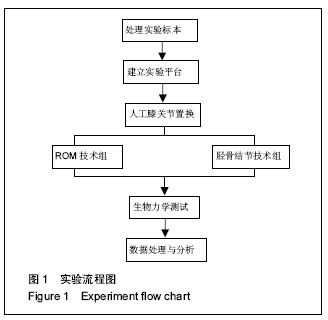| [1] 徐铭.A2B5+GL261细胞裂解物致敏DC疫苗治疗小鼠GL261脑胶质瘤[D].复旦大学,2012.
[2] 储小兵,吴海山,徐长明,等.全膝关节置换术中股骨假体旋转对髌股关节生物力学影响的实验研究[J].中华外科杂志,2006,44(16):1136-1140.
[3] 储小兵,吴海山,徐长明,等.胫骨假体旋转对线技术对髌股关节生物力学影响的实验研究[J].中国矫形外科杂志, 2005,13(23):1795-1797,1805.
[4] 罗吉伟,余存泰,覃健,等.全膝关节置换术的假体旋转力线不良与髌股关节并发症[J].南方医科大学学报,2006, 26(2):217-219.
[5] 储小兵,吴海山,祝云利,等.全膝置换术中股骨假体旋转参照轴的影像学比较研究[J].解放军医学杂志,2006,31(1): 69-70.
[6] 李宝文.全膝人工关节置换涉及的生物力学变化[J].中国组织工程研究与临床康复,2008,12(17):3313-3316.
[7] Figgie M, Goldberg V, Figgie H. Salvage of the symptomatic patellofemoral joint following cruciate substituting total knee arthroplasty. Am J Knee Surg, 1988;1: 48-55.
[8] Figgie M, Goldberg V, Figgie H. The effects of alignment of the implant on fracture of the patella after total condylar knee arthroplasty. J Bone Joint Surg, 1989;71A: 1031-1039.
[9] 友斯伟.全膝关节置换术中股骨假体及胫骨假体可靠的水平面旋转对线的确定[D].上海交通大学,2013.
[10] 杨庆武,赵文玲.股骨假体旋转力线与TKA术后疼痛相关性分析[J].中国伤残医学,2014,(2):302-302,303.
[11] 覃承诃.全膝关节置换术中胫、股骨假体旋转力线的相关研究[D].第一军医大学,2006.
[12] 赵宝辉,陈百成,邵德成,等.股骨远端旋转对线参考轴线与胫骨机械轴关系的研究[J].中华外科杂志,2008,46(14): 1085-1087.
[13] 傅晓东.TKA术后髌股关节并发症与假体旋转不良的关系[D].上海交通大学,2012.
[14] 张延辉.TKA中股骨远端不同旋转角度截骨对髌股关节压力的影响[D].哈尔滨医科大学,2009.
[15] Ikeuchi M,Yamanaka N,Okanoue Y,et al. Determining the rotational alignment of the tibial component at total knee replacement: a comparison of two techniques. J Bone Joint Surg. 2007;89(1):45-49.
[16] Mizu-uchi H,Matsuda S,Miura H, et al.The evaluation of post-operative alignment in total knee replacement using a CT-based navigation system. J Bone Joint Surg. 2008;90(8):1025-1031.
[17] 姜侃,曲铁兵,钟广军,等.人工膝关节置换术中股骨远端旋转对线方法的研究与进展[J].中国矫形外科杂志,2013, 21(21):2181-2183.
[18] 刘忠堂.全膝关节置换术后髌股关节生物力学及临床研究[D].第二军医大学,2007.
[19] Tsukeoka T, Tsuneizumi Y, Lee TH, et al.The effect of the posterior slope of the tibial plateau osteotomy with a rotational error on tibial component malalignment in total knee replacement. J Bone Joint Surg. 2013;95/ B(9): 1201-1203.
[20] 肖瑜.全膝关节置换术中胫骨假体旋转对线技术的新方法[D].天津医科大学,2008.
[21] Chauhan SK,Clark GW,Lloyd S,et al.Computer- assisted total knee replacement. A controlled cadaver study using a multi-parameter quantitative CT assessment of alignment (the Perth CT Protocol). J Bone Joint Surg. 2004;86(6):818-823.
[22] 翁文杰,张华山,王锋,等.全膝人工关节置换术中的旋转对线[J].中国骨伤,2008,21(3):202-203.
[23] 赵宝辉.国人膝关节假体旋转对线参考标志的变异性和膝关节解剖特点与屈膝范围关系的研究[D].河北医科大学,2009.
[24] 陈识,关振鹏,张绍龙,等.股骨后髁角与股骨假体旋转对线在人工全膝关节置换术中的应用[J].中华放射学杂志, 2013,47(5):470-471.
[25] Kim YH, Park JW, Kim JS, et al.The relationship between the survival of total knee arthroplasty and postoperative coronal, sagittal and rotational alignment of knee prosthesis. Int Orthop. 2014; 38(2):379-385.
[26] Shakespeare D,Kinzel V,Ledger M, et al.Achieving ligament stability and correct rotational alignment of the femur in knee arthroplasty: a study using the Medial Pivot knee. Knee. 2005;12(6):419-423.
[27] 吴剑彬,潘骏,陈临炜,等.全膝关节置换术中股骨假体旋转对线标志的研究进展[J].浙江创伤外科,2009,14(5): 538-541.
[28] Jerosch J,Peuker E,Philipps B, et al. Interindividual reproducibility in perioperative rotational alignment of femoral components in knee prosthetic surgery using the transepicondylar axis. Knee Surg Sports Traumatol Arthrosc. 2002;10(3):194-197.
[29] Siston RA,Cromie MJ,Gold GE, et al.Averaging different alignment axes improves femoral rotational alignment in computer-navigated total knee arthroplasty. J Bone Joint Surg. 2008;90(10): 2098-2104.
[30] 吴剑彬.磁共振上股骨远端旋转力线的测量和股骨上髁的解剖研究[D].温州医学院,2009.
[31] 李新胜,姜建威,储小兵,等.股骨后髁角的影像学测量临床价值[J].南京医科大学学报(自然科学版),2006,26(5): 371-372.
[32] 周一新.人工膝关节假体设计对全膝关节置换术后髌股关节功能的影响(中)[J].中华骨科杂志,2006,26(9): 646-648.
[33] Siston RA,Cromie MJ,Gold GE, et al.Averaging different alignment axes improves femoral rotational alignment in computer-navigated total knee arthroplasty. J Bone Joint Surg. 2008;90/A(10):2098-2104.
[34] Murakami AM, Hash TW, Hepinstall MS, et al.MRI evaluation of rotational alignment and synovitis in patients with pain after total knee replacement. J Bone Joint Surg. 2012;94/B(9):1209-1215.
[35] 史博,孙振辉,杨涛,等.内翻型膝关节骨性关节炎患者胫股关节扭转和胫骨假体旋转定位研究[J].中国矫形外科杂志,2013,21(23):2339-2344.
[36] Lutzner J,Krummenauer F,Wolf C, et al.Computer- assisted and conventional total knee replacement: a comparative, prospective, randomised study with radiological and CT evaluation. J Bone Joint Surg. 2008;90(8):1039-1044.
[37] Tsukeoka T, Tsuneizumi Y, Lee TH, et al. The effect of the posterior slope of the tibial plateau osteotomy with a rotational error on tibial component malalignment in total knee replacement. Bone Joint J. 2013;95B(9): 1201-1203.
[38] 储小兵.人工全膝关节置换术股骨假体旋转对线的实验与临床研究[D].第二军医大学,2006.
[39] Nicoll D,Rowley DI.Internal rotational error of the tibial component is a major cause of pain after total knee replacement. J Bone Joint Surg. 2010;92/B(9): 1238-1244.
[40] 张闻,邵俊杰,张先龙,等.计算机导航对人工全膝关节置换术下肢旋转对线的影响[J].中华骨科杂志,2008,28(10): 819-823. |
.jpg)

.jpg)